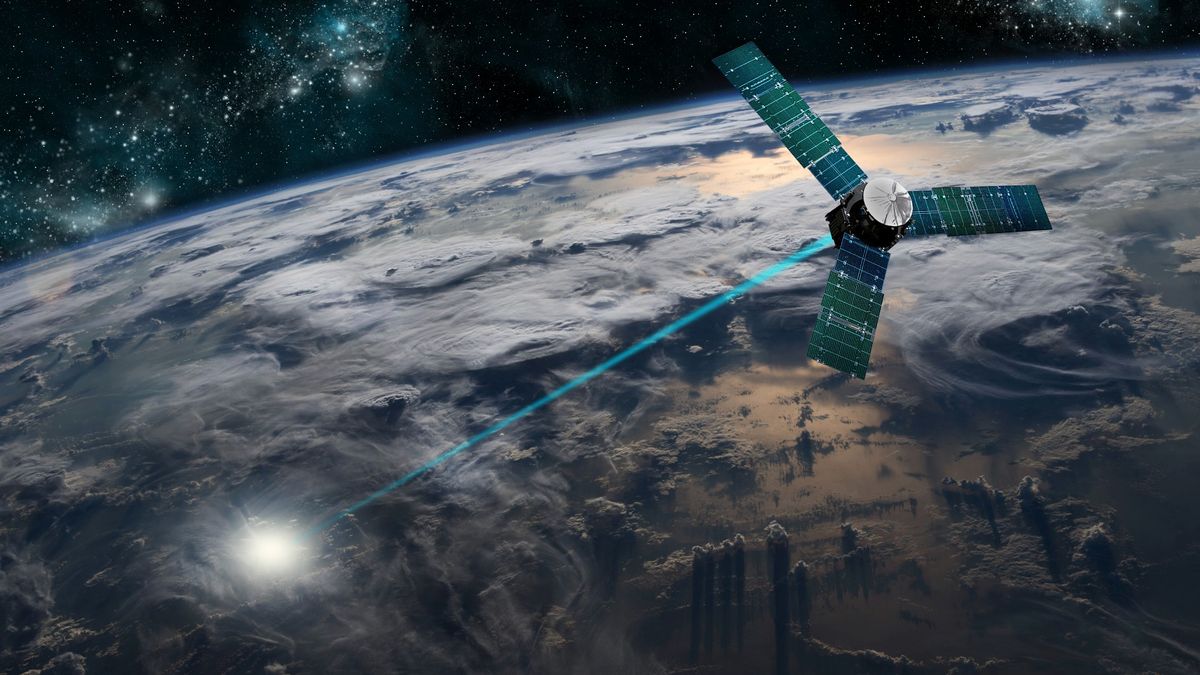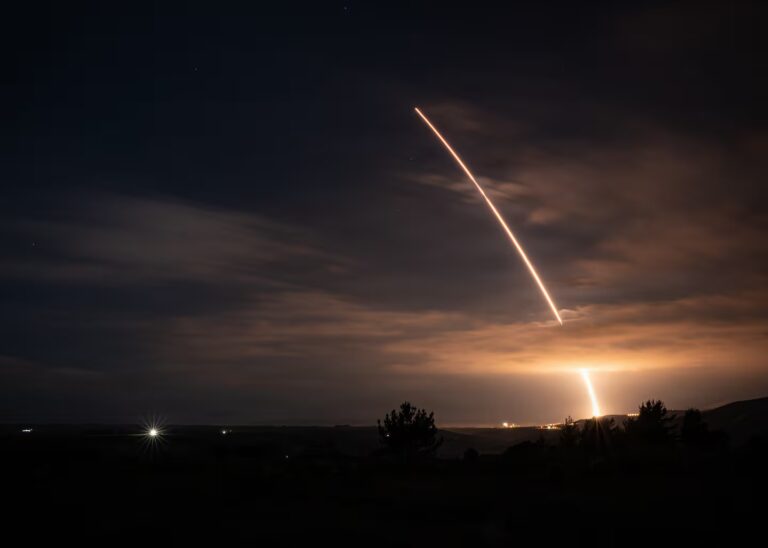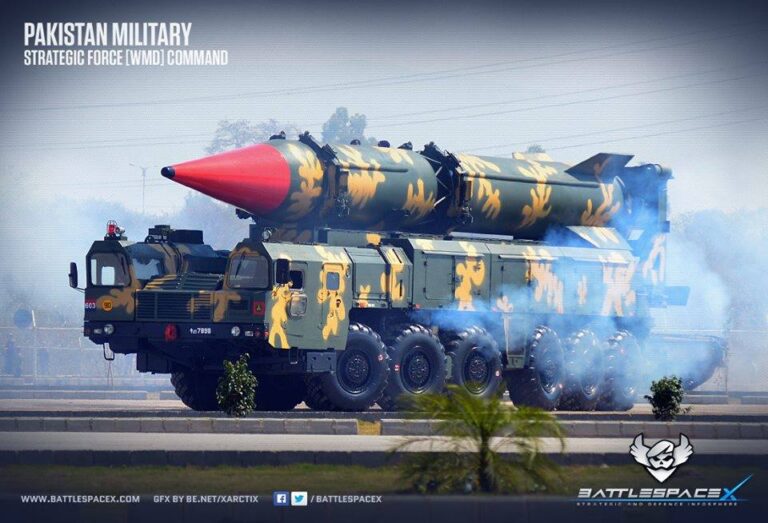
Source: Space.com
Safia Mansoor
“Space is a war-fighting domain, just like the land, air, and the sea”
Former U.S. President Donald Trump
On October 4,1957, the Soviet Union launched the first-ever artificial satellite, Sputnik, igniting a scramble for space superiority known as the first space age. With swift technological leaps in satellites, rockets, and human spaceflights, the U.S. and the USSR became the key spacefaring nations, launching 93% of total satellites into space from 1957 until 1990. Among these satellites, 70% were launched for military purposes, metamorphosing space into an extra-terrestrial theater of the Cold War. The end of the Cold War, however, engendered a new era of space competition termed as the second space age. It was marked by the proliferation of space capabilities to a number of states and an enhanced involvement of the private sector in space exploration. The meteoric advancements in space technology have carved the space for more frenetic competitions in outer space, making it what a United Nations’ report calls a “congested, contested, and competitive” domain. Currently, almost 80 states have their own satellites who regard space systems and services as quintessential to military power projection and improving operational capabilities. The ever-escalating military competitions in outer space, owing to its colossal strategic significance, have ushered new trends in space warfare.
One of the key trends in satellite warfare, a subset of space warfare, includes satellite miniaturization whereby states are incessantly investing in a cluster of small satellites also known as satellite swarms. Small satellites, besides offering the economic dividend of lower cost and shorter development time, provide multitudinous military benefits. These satellites offer multifarious services, such as positioning, navigation, and timing; communication and remote- sensing, as well as rendezvous and proximity operations. The constellation of small satellites is a source of deterrence by denial as an adversary may not be able carry out an attack if it cannot degrade the targeting capability.
The cluster of such miniaturized satellites can muddle targeting by enemy; moreover, constellation continues to operate despite losing any satellite, leading to resilience of systems during crises. Their short development time also provides the opportunity to swiftly substitute the small satellites to reconstitute constellations if they are attacked by an adversary. Additionally, small satellites dispense revisit frequency that in turn provides an advantage to military decision-makers in gauging near-real time situation of a specific area. A number of states are investing in small satellites with the lead being taken by the U..S, Russia, and China. The first satellite network of the U.S. Space Force signals the proclivity of the U.S. military to invest in swarms of cheaper and smaller satellites for communication between ground systems and satellites, data transfer, and missile tracking. The U.S. program ,Tranche 0 , a set of 28 satellites, is a notable example in this regard. As far as China is concerned, its military use of satellite swarms is evidenced by the deployment of small satellites in low Earth orbit to carry out surveillance over Australia during Exercise Malabar in 2023.
Another key trend evident in the ongoing space warfare is the proliferation and increase in counterspace weapons. There is a varied spectrum of these weapons grounded on technological sophistication, resources required for their development and deployment, and the effects they create. These weapons are categorized as kinetic physical, non-kinetic physical, cyber, and electronic. Any weapon from the aforementioned categories can act as an anti-satellite (ASAT) weapon to target satellites as well as their ground stations. The 2024 Secure World Foundation report titled “Global Counter Space Capabilities” highlights the counterspace capabilities of 12 states . According to the said report, the U.S. has taken the lead while Russia and China are keeping abreast in counterspace capabilities, especially when it comes to space domain awareness and electronic warfare. The counterspace capabilities of these 12 states in various domains are illustrated in the figure below:
Figure 1: Counterspace capabilities across key domains

Source: “ 2024 Global Counter Space Capabilities Report: An Open Source Assessment”
As of now, no country has deployed ASAT weapons in warfare; however, states like the U.S., Russia, China, and India have destroyed their respective satellites to brag about their ASAT capability. To complicate the matter, on the one hand, Russia is reportedly pursuing a lethal ASAT weapon that can create weapon effects through nuclear explosions, including electromagnetic pulse that can destroy and disable satellites while, on the other hand, the U.S. is carrying out responsible counterspace campaigning. This refers to the campaigning done on a day-to-day basis and during a protracted competition to counter malign activities in space. It happens to be one of the key fundamentals of the Competitive Endurance Theory introduced by U.S. Chief of Space Operations, General Saltzman, in March 2023. With an increasing reliance of states on outer space, the ability to endanger satellites of other states remains a key concern.
The transforming milieu of space warfare is also characterized by gray zone threats as states are honing their space capabilities for gray zone competition. The three fundamental types of gray zone threats in space are: a) cyber attacks against space systems; b) targeting commercial space assets during conflictual scenarios; and c) carrying out proximity operations. All the aforementioned provocative actions are irregular in nature and fall short of direct use of military force. The real world examples of such irregular warfare are found in the Ukraine war when Russian hackers carried out cyber attacks against Viasat, a U.S. satellite firm. This attack was carried out an hour prior to Ukraine’s invasion, not only hampering command and control systems but also communications of the Ukrainian military, which were dependent on the satellite services of Viasat. Additionally, amidst the Ukraine war, Russia jammed broadband Internet signals emanating from SpaceX’s Starlink constellation. Besides Russia, China’s space gray zone tactics, notably, rendezvous and proximity Operations (RPO) in geostationary orbit, such as those performed by its Shijian-17 satellite and other Chinese spacecraft in 2018, are testament to the ever-enhancing space capabilities of states in gray zones.
States have also been developing directed energy weapons (DEW), entailing highly focused, concentrated electromagnetic energy as opposed to physical projectile, for hitting a target. Such weapons include systems that use high energy lasers (HELs) and high-power microwaves (HPMs), alongside energy beams, that can act as counterspace weapons. The notable examples include Russian satellite blinding lasers, Kalina, and China’s satellite mountable solid state laser, China’s HPM weapon, relativistic klystron amplifier, that can destroy and jam satellites. Moreover, another key trend related to jamming satellites, which is garnering high attention, is the Space Electronic Warfare (EW), which involves the use of radiofrequency energy to jam or interfere with communication either from or to satellites without inflicting physical damage to it. Electronic attacks may be jamming — an electronic attack that meddles with radiofrequency communication either by emitting noise within a satellite antenna’s field of view, and more specifically, within the same frequency band, or targeted receiver.
Another type of electronic attack may be spoofing in which an attacker’s device generates pseudo signals, to attack downlink or uplink data of satellites. U,S. Operational Counter Communication System, Russian Tirada- 2 system, and China’s GNSS jamming capabilities are some of the noteworthy examples in this regard. Therefore, one can reasonably argue that the ever-enhancing strategic significance of space has raised the specter of space warfare. Being considered as a source of strategic advantage as well as a key instrument of military strategy, space capabilities are being given due attention. Therefore, states are buttressing their military capabilities in space through the exploration of each possible technological aspect, as evidenced by these new trends. All this has certainly transformed the strategic landscape in space.
Safia Mansoor is a PhD International Relations Scholar at the School of Integrated Social Sciences, University of Lahore.
The views expressed in the article are the author’s own and do not necessarily reflect those of Pakistan Politico.




